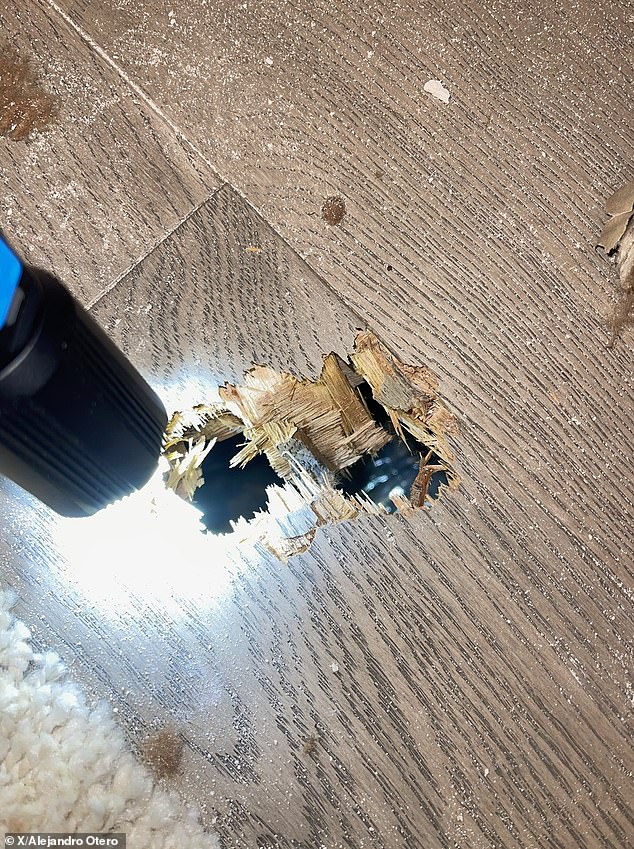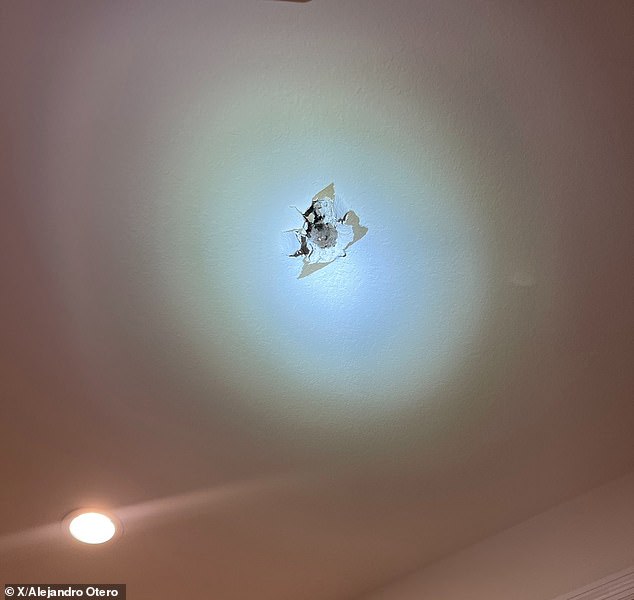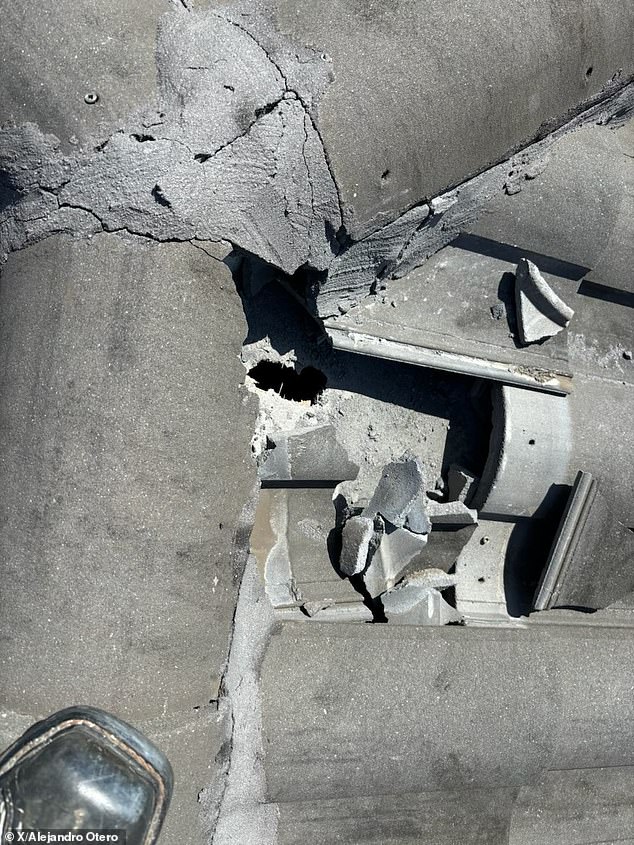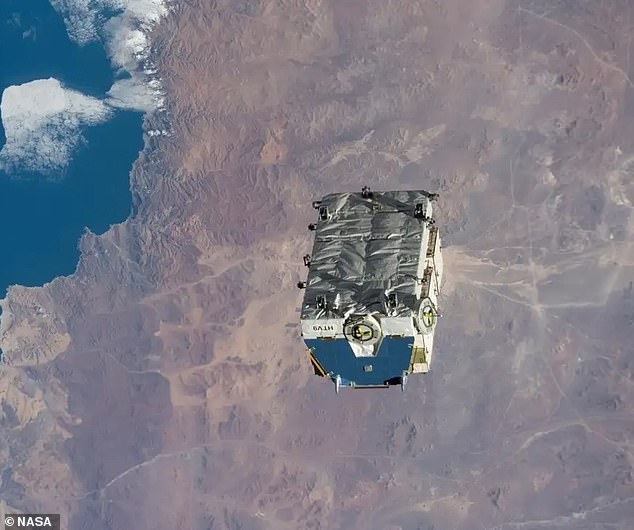A 5,800-pound piece of battery pallet thrown from NASA’s ISS crashes through a Florida home — smashing through two floors
A chunk of metal crashed through a Florida home, believed to be from a 5,800-pound battery pallet discarded by the International Space Station (ISS).
Homeowner Alejandro Otero of Naples was on vacation when he received a call from his son, who said he heard a “great noise” and that there were gaping holes in the ceiling and floor – as he explained what had fallen and nearly killed him. hit.
The two-pound cylindrical object has since been recovered by NASA to determine its origins. If it turns out to be space junk, the agency could be held liable for damages.
NASA discarded the pallet in 2021, expecting it to remain in orbit for two to four years before re-entering Earth’s atmosphere in a controlled manner – but the unguided attempt left it landed off course and unpredictably.
A two-pound object crashed into a man’s home in Naples, Florida, earlier this month, prompting a NASA investigation into the origins of the space debris

The space debris crashed through Alejandro Otero’s roof and went through his floor (pictured) into the basement below.
NASA spokesperson Joshua Finch told Dailymail.com: “NASA, working with the homeowner, has collected an item and will analyze the object as soon as possible at NASA’s Kennedy Space Center in Florida to determine its origin.”
He added: ‘More information will be available once the analysis is completed.’
The battery pallet would be above Ft. Myers instead landed off course on March 8 because astronomers misjudged the time it would take to reenter Earth’s atmosphere.
Otero shared Pictures of the object on X, asking someone to put him in touch with NASA, and astronomer Jonathan McDowell respondedtelling him it was probably an EP-9 pallet re-entering the Gulf of Mexico, between Cancun and Cuba.
McDowell said it entered the atmosphere just before 7:30 PM UTC, but was headed toward Ft. Myers was just a forecast window, adding that “a few minutes later it came back in and it would have reached Fort Myers.”
“Something tore through the house and then made a big hole in the floor and ceiling,” Otero said WINK News.
‘When we heard that, we thought: impossible, and then I immediately thought of a meteorite.’

Alejandro Otero said the object almost hit his son when it fell through the ceiling (photo). Otero said his son called him while he was on vacation after hearing a “great noise.”

The object finally stopped when it reached Otero’s basement (pictured), breaking the concrete and damaging his home. The federal government could be held liable for damage to Otero’s home if the battery is found to be NASA’s property
The metal object weighed about two pounds, according to Otero, who described it as “an apparently man-made cylindrical object.”
‘I was shaking. I was in complete disbelief,” Otero told WINK.
‘What are the chances of something hitting my house with that much force and causing that much damage?
“I’m super grateful that no one was hurt.”

NASA released the pallet (pictured) from the International Space Station in 2021, saying it would orbit Earth for two to four years before returning to the atmosphere.

More than 30,000 pieces of space debris orbit Earth’s orbit, posing a high risk of debris re-entering the atmosphere
Otero is awaiting response from NASA and other responsible agencies to resolve the damage his home suffered, writing that “their assistance is critical in resolving the damage caused by this intentional release.”
He continued: ‘But more importantly, how should the cargo be arranged in the future so that it burns in its entirety when it comes back in.’
The federal government could be liable for the damage to Otero’s home under the Federal Tort Claims Act, which states that any negligent or wrongful actions would make it responsible for the destruction.
In 2021, NASA told astronauts on the ISS to release Japan’s cargo pallet containing nine old batteries, which would remain in orbit for two to four years before crashing back to Earth.
The space agency said so Space flight now at the time they expected the pallet to burn ‘harmlessly’ when re-entering the Earth’s atmosphere, but did not know how many pieces of the batteries or the pallet would remain intact.
However, even though NASA owned the battery, the Japanese space agency launched the pallet they were attached to, potentially causing the country to take the blame.
“It will be more interesting if it is discovered that this material is not originally from the United States,” said Michelle Hanlon, executive director of the Center for Air and Space Law at the University of Mississippi. Ars Technica.
“If it is a man-made space object that was launched into space by another country and caused damage on Earth, that country is absolutely liable to the homeowner for the damage caused.”
Space debris is any disused equipment in space and there are currently more than 30,000 objects in orbit that could fall back to Earth within a few years.
Although most space debris burns up on reentry, Report 2023 warned by the Federal Aviation Authority that leftover debris could kill or injure someone every two years by 2035.
